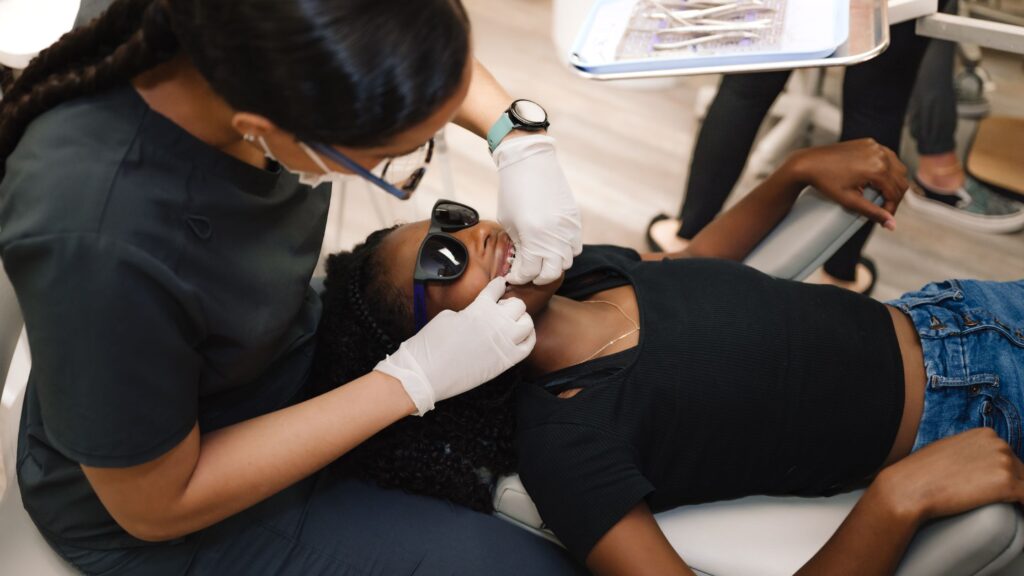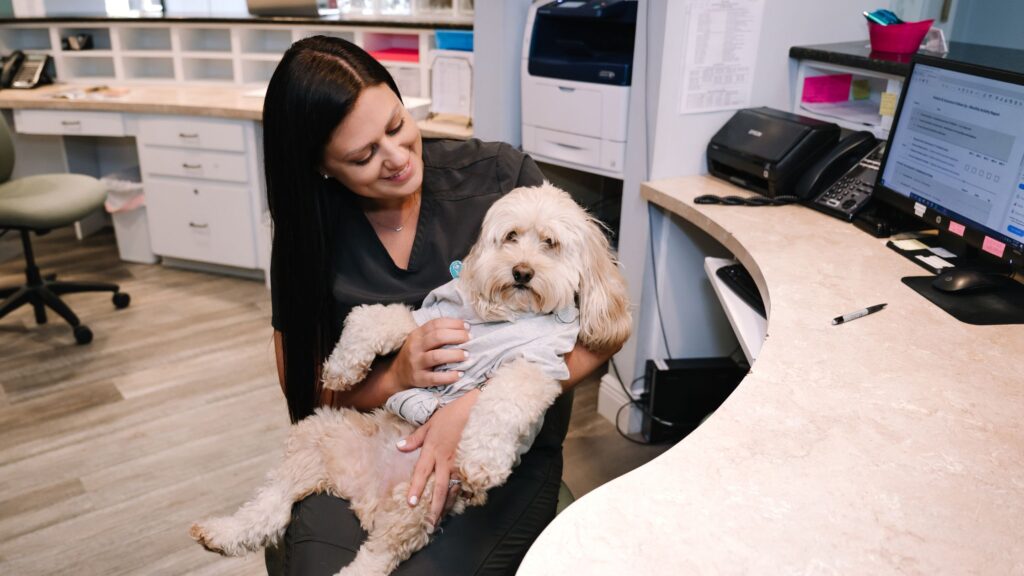Braces have been around for a long time – since about 1819.
Even before modern braces hit the scene, people experimented with ways to straighten teeth for many centuries. Roman tombs have been unearthed with clear evidence of gold wire used to bind teeth.
The earliest concept of today’s orthodontic braces comes from a book called The Surgeon Dentist that was written in France in 1728. The author, Pierre Fauchard, discussed some of the first ever ideas for orthodontic appliances. Less than 30 years later, another author expanded on his concepts.
That second book, The Dentist’s Art, covered methods for tooth alignment in detail.
Since then, millions and millions of people from all around the world have benefited from dental braces. About four million people in the United States are wearing braces as you read this, and 25% of them are adults. The proven history of braces gives them a unique status in orthodontic care and dental health.
These days, our technology is much better. We have access to all kinds of approaches that the ancients could never have imagined, from clear braces to digital mouth imaging. Even so, the same basic ideas of the past are still in use with today’s braces. Sometimes, you just can’t improve on perfection.
Braces are safe, highly effective, and have virtually no risk of side effects. Even though they tend to work a little bit faster for younger patients, adults and children alike can benefit from them. And they’re often the best bet for the most severe tooth gaps and tooth misalignments. Clear plastic aligners, popular for their discreet appearance, aren’t always a good choice for those serious cases.
If there’s any drawback to braces, it’s the little issues you can run into along the way.
Although it doesn’t happen to everyone, it’s not out of the ordinary to break a bracket on your braces. There’s a quick fix for this and other minor issues you could encounter during your treatment.
You can always call your Port Orange orthodontist for advice, but many of these mishaps can be handled at home in just a few minutes. The trick is knowing what to do and having the right supplies. In most cases, you can be “almost good as new” in no time – just don’t panic!
Once you make a quick fix, it’s safe to wait until your next scheduled orthodontist appointment to get a permanent solution. Of course, if you’re experiencing pain or can’t seem to make progress with an issue, you’re always welcome to visit Dr. Beauchamp for immediate help.
Breaking a bracket and most other mishaps aren’t necessarily something to worry too much about. Here’s what to do.
The Quickest and Most Effective Ways to Fix Broken Brackets and More
On a conventional pair of braces, a bracket is one of the small metal squares attached to the front and side teeth. They serve as guides that not only help to move the teeth but also hold the wires.
Both the brackets themselves and the attached wires can break, but it’s very rare to break more than one at a time. Brackets are at the biggest risk if you forget about foods that are off-limits with braces. Hard foods can apply so much force that a wire snaps or a bracket breaks.
The best way to fix your bracket depends on exactly what’s gone wrong with it.
As soon as you notice your braces are damaged, assess the area and make sure there’s no risk of cutting your mouth, gums, or tongue. It’s important to apply a fix fast, both to protect your mouth and to make sure your treatment continues to go as planned.
You can use your bathroom mirror to figure out the issue, then take the right steps below:
1. Floating Bracket
A floating bracket is how your Port Orange orthodontist describes a bracket that’s come off.
The bracket is held onto the teeth with special adhesive. If a bracket becomes separated from the tooth’s surface but is still on the wire, it could rotate and move around. The biggest risk of a floating bracket is that the bracket will become completely dislodged and you might swallow it.
If completely loose, the bracket may be a choking hazard, so be very careful.
Depending on the circumstances, you might have a floating bracket for some time before you notice it. It rarely causes discomfort on its own, although there is some risk that it could rub on the inside of your mouth. Using a pair of sterilized tweezers, you can make some helpful adjustments.
Tweezers can be used to slide the bracket along the wire so it sits safely between two teeth or near the center of the tooth, where it is unlikely to do any harm. If the bracket is partially rotated, you can put it back into the correct orientation with the tweezers, too.
Is your floating bracket causing irritation? Use dental wax to cover the surface. Dental wax is a clear and non-toxic wax, usually made of a natural substance like beeswax. It’s specially designed to relieve and prevent pain associated with broken braces and minor dental accidents.
When using dental wax, remember that you only need a portion the size of a pea – about as big as the amount of toothpaste you use when brushing. Dental wax softens with the warmth of your hands and can be applied to metal or even tooth surfaces to create a temporary smooth surface.
It’s safe to eat and drink as normal when using dental wax, and it is formulated to be okay to swallow.
2. Broken Wire
Within a set of braces, the archwire is the thin wire that passes through each bracket. It conforms to the dental arch and helps exert gentle pressure that slowly moves the teeth into the treated position. Because it is threaded through every bracket, it can break in any location.
The wires are essential to getting results from your braces, so if one breaks, you’ll want to schedule an orthodontic appointment soon. With a broken wire, there’s some risk the sharp end will poke into your cheek or gums. In rare cases, a cut from sharp metal could lead to infection.
Luckily, it only takes a few seconds to neutralize the risk.
With a broken wire, only the sharp surface on the end is hazardous. So, you can use nail clippers or a set of pliers to cut off that end. With a flat finish to the wire, it will no longer be able to damage soft tissue. Just be careful not to swallow the clipped end as it comes out.
3. Protruding Wire
Like the other issues, a protruding wire is a nuisance, but not usually something to fret about.
A protruding wire happens when the wire comes out of the last bracket at the far end of the dental arch. The location can make it a little bit harder to access. All you have to do is follow the same process: If the end is sharp, cut it with nail clippers or a small set of pliers, smoothing it out.
If you prefer, you can also use dental wax to cover up the end of the wire.
4. Bent Wire
Wires are prone to bend when a lot of force is applied to them at any given time. Bite into an apple and you might have a bend somewhere in your wires! Though it isn’t as dramatic as some other matters, it means the braces are no longer taut, which compromises your orthodontic treatment.
Bent or loose wires don’t pose any special risk of irritation, but they also can’t be fixed at home. Call Dr. Beauchamp for a convenient Port Orange orthodontic appointment. She’ll fix up the wires and test them to be sure they are applying the right level of tension for your treatment goals.
What Causes Broken Brackets and Other Issues with Braces?
Parents, don’t worry if a broken bracket happens.
It doesn’t mean your child is doing anything wrong!
The human jaw is capable of a tremendous amount of bite force. Throughout life, that force is being applied to food and also absorbed by the teeth and mouth. That’s one reason why, as we age, chewing surfaces of teeth start to wear down. Orthodontic treatment is one way to support life-long health.
With a straight, healthy smile, bite force is distributed more evenly throughout the mouth. That helps teeth last longer and reduces complications like cracked and chipped teeth. Combined with the right dental health habits, orthodontic care is a lasting investment in a strong, beautiful smile.
If a bracket or wire breaks, get the facts. A child could accidentally contribute to damaged braces by having the wrong food or eating it in the wrong way. But, just as often, a blooper happens “out of nowhere.” Fortunately, your Port Orange orthodontist can always help out.
During treatment with braces, there will usually be a follow-up appointment coming up before you know it. Depending on where you are in treatment, it might be a few weeks away, or it may happen once a month. Whatever the case, the ups and downs of braces are rarely serious enough to need a special appointment. That’s part of why it’s vital to keep up with your planned appointment schedule.
If broken brackets or other setbacks happen more than once, it may mean that the braces themselves need to be adjusted. Be sure to have a conversation with your child to help them understand and take care of their braces, so they will be proud of the beautiful smile they are developing.
Visit Beauchamp Orthodontics to Keep Treatment on Track
Once braces are in place, getting the most from them is simply a matter of keeping them clean and avoiding anything that might damage them – for example, wearing athletic mouth guards whenever necessary. The final part of that equation? Make sure to visit a Port Orange orthodontist regularly!
Dr. Marielle Beauchamp is a Port Orange orthodontist for the whole family. Creating a comfortable and safe environment, she is always there to explain your treatment options or offer a helping hand. Braces can always be fixed – it’s just a matter of applying the right know-how.
No matter if you’re nine or 90, Beauchamp Orthodontics is your home for safe, effective, and affordable orthodontic care. We are always glad to welcome new patients or see our old friends again. Contact us today to schedule your consultation. We look forward to your visit!



